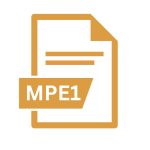.IDEPLUGIN File Extension

Xcode IDE Plug-in
| Developer | Apple |
| Popularity | |
| Category | Plugin Files |
| Format | .IDEPLUGIN |
| Cross Platform | Update Soon |
What is an IDEPLUGIN file?
‘.IDEPLUGIN’ file extension stands as a symbol of innovation and efficiency, particularly within the realm of Apple’s Xcode Integrated Development Environment (IDE).
These files, often elusive to the uninitiated, serve a crucial role in extending the functionality of Xcode, empowering developers to streamline workflows and unleash their creative potential.
In this comprehensive exploration, we delve into the origins, evolution, structure, and practical implications of the ‘.IDEPLUGIN’ file extension.
More Information.
The history of ‘.IDEPLUGIN’ files intertwines with the evolution of Xcode itself. As developers grappled with increasingly complex projects and workflows, the need for extensibility became apparent.
Xcode plug-ins emerged as a solution, offering a mechanism to augment the IDE with additional functionality ranging from code analysis tools to custom interface elements.
In its nascent stages, the primary purpose of ‘.IDEPLUGIN’ files was to bridge the gap between Xcode’s native capabilities and the diverse requirements of developers.
Whether it was simplifying repetitive tasks, integrating third-party tools, or enhancing code navigation, these plug-ins became indispensable companions for many Xcode users.
Origin Of This File.
The ‘.IDEPLUGIN’ file extension traces its roots back to the inception of Xcode, Apple’s powerful IDE tailored for macOS, iOS, watchOS, and tvOS development.
Initially introduced as a means to enhance the capabilities of Xcode beyond its core features, these plug-ins quickly gained traction among developers seeking to customize their development environment to suit specific needs and preferences.
File Structure Technical Specification.
‘.IDEPLUGIN’ file is a bundle that encapsulates various resources and metadata required to extend Xcode’s functionality.
The internal structure of these bundles typically includes executable binaries, interface definitions, resource files, and configuration metadata.
Key components of an ‘.IDEPLUGIN’ bundle may include:
- Executable Binary: The heart of the plug-in, containing the actual code that extends Xcode’s functionality. This binary is often compiled from source code written in languages such as Objective-C, Swift, or even scripting languages like Python.
- Interface Definitions: Interface Builder files or code defining custom UI elements or modifications to existing interfaces within Xcode.
- Resource Files: Images, icons, localized strings, and other assets required by the plug-in to provide a seamless user experience.
- Metadata: Property lists (
.plistfiles) containing configuration settings, version information, and other metadata necessary for Xcode to recognize and load the plug-in.
How to Convert the File?
Converting a file to the ‘.IDEPLUGIN’ format involves packaging the necessary resources and metadata into a bundle compatible with Xcode.
While the specifics may vary depending on the type of functionality being added, the general steps typically include:
- Create Project: Start by creating a new Xcode project or workspace for your plug-in development.
- Implement Functionality: Write the code or design the interface elements that constitute the core functionality of your plug-in.
- Bundle Resources: Include any required resource files such as images, icons, or interface definitions within your project.
- Configure Metadata: Define the necessary metadata in property list files to specify details such as the plug-in’s name, version, and compatibility requirements.
- Build and Package: Compile your project into an executable binary and bundle it together with the resources and metadata into a ‘.IDEPLUGIN’ bundle.
- Test and Distribute: Thoroughly test your plug-in within Xcode to ensure proper functionality and compatibility. Once validated, distribute it through appropriate channels such as the Mac App Store, GitHub, or dedicated developer forums.
Advantages And Disadvantages.
Advantages:
- Enhanced Productivity: By extending Xcode’s capabilities, plug-ins can automate repetitive tasks, provide quick access to common functionalities, and streamline development workflows.
- Customization: Developers have the freedom to tailor their development environment to suit their preferences and workflow requirements, fostering a more efficient and enjoyable coding experience.
- Community Contributions: The open nature of Xcode plug-ins encourages collaboration and knowledge sharing within the developer community, resulting in a rich ecosystem of third-party extensions and tools.
Disadvantages:
- Compatibility Concerns: Updates to Xcode or changes in underlying APIs can potentially break compatibility with existing plug-ins, necessitating updates or modifications to ensure continued functionality.
- Security Risks: Installing third-party plug-ins from untrusted sources can pose security risks, as they may contain malicious code or inadvertently expose sensitive information.
- Performance Impact: Poorly designed or resource-intensive plug-ins can degrade the performance of Xcode, leading to slower build times or responsiveness issues.
How to Open IDEPLUGIN?
Open In Windows
- While Windows doesn’t natively support ‘.IDEPLUGIN’ files or Xcode, you can still explore their contents using third-party file management tools capable of handling bundle formats. Applications like 7-Zip or WinRAR may allow you to extract and inspect the contents of the ‘.IDEPLUGIN’ bundle.
Open In Linux
- Like Windows, Linux doesn’t directly support Xcode or ‘.IDEPLUGIN’ files. However, you can use command-line tools like
lsorunzipto inspect the contents of the ‘.IDEPLUGIN’ bundle and explore its structure.
Open In MAC
- macOS, being the native environment for Xcode development, seamlessly integrates ‘.IDEPLUGIN’ files into the Xcode IDE. Simply double-clicking on the ‘.IDEPLUGIN’ file should automatically install and integrate the plug-in into Xcode.
Open In Android
- Android development typically doesn’t involve Xcode or ‘.IDEPLUGIN’ files. However, if you encounter an ‘.IDEPLUGIN’ file in an Android development context, it may be a mislabeled file or intended for use with cross-platform development tools. In such cases, you would need to investigate the file’s contents and determine its compatibility with your development environment.
Open In IOS
- iOS development is closely tied to Xcode and macOS. To open an ‘.IDEPLUGIN’ file on iOS, you would typically transfer the file to a macOS system with Xcode installed and follow the standard procedure for installing Xcode plug-ins.













